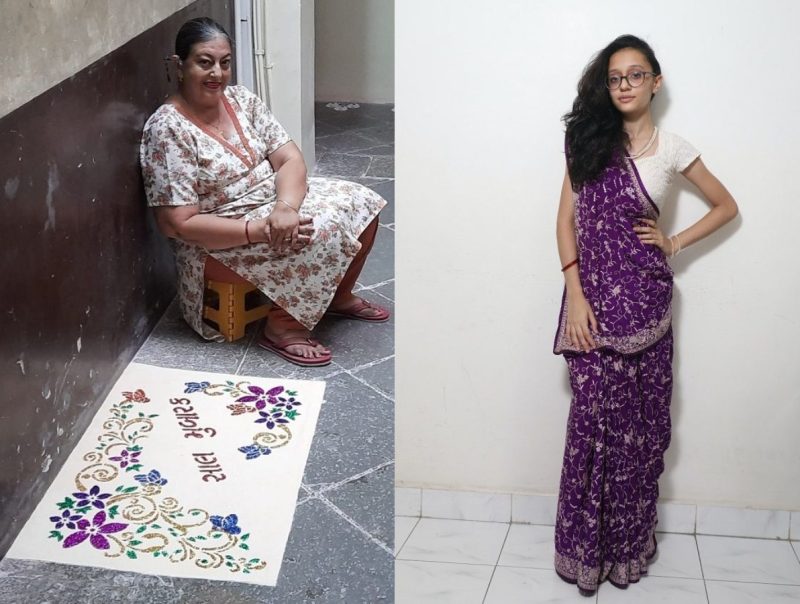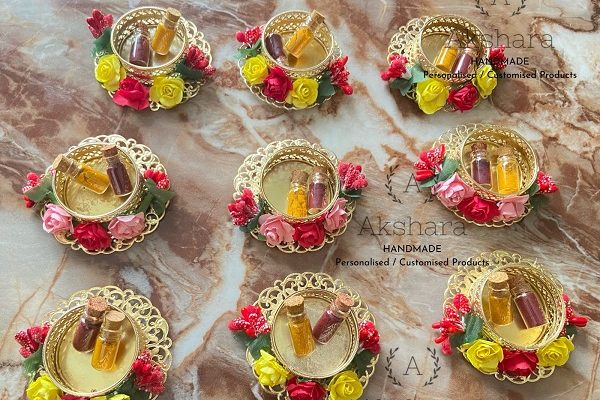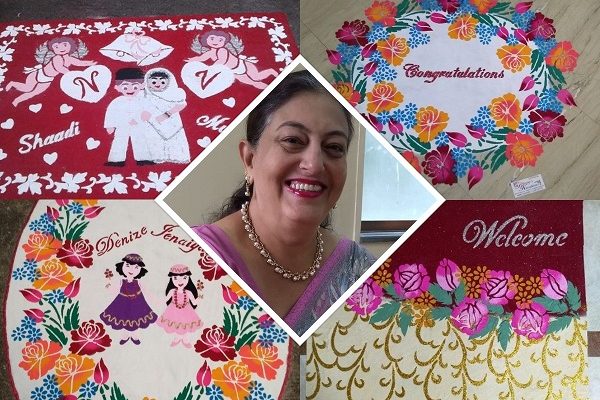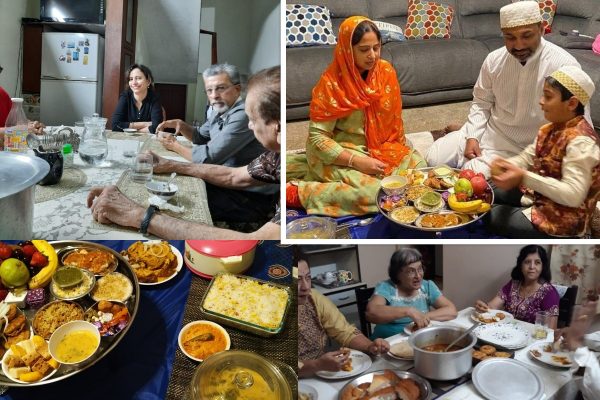The glittery splendour of chalk art and Gara embroidery add a distinct colour to the Navroz celebrations of the Parsi community of India.
With the aesthetic hues of chalk at the doorstep and the intricate splendor of gara embroidery on the six yard, the Parsis of India celebrated Navroz on August 16, 2021. Navroz or Nowruz means “new day”. In India, the Parsis follow the Shahenshahi calendar and hence celebrate the New Year in the month of August every year. On the other hand, the Persian New Year is celebrated by Iranians and the global Zoroastrian diaspora on March 21.
Parsis are Zoroastrians who migrated to the Indian subcontinent from Persia between the 8 -10 Century. One of the most illustrious and close-knit communities of India, Parsis have become an integral part of the cultural mosaic of the country. Their unique traditions set them apart from the Zoroastrians of Iran and the smaller Zoroastrian Indian community of Iran.
Asrashaheen.in brings you a glimpse of their rich heritage, including some of their artistic rituals and the traditional embroidery, which gives them a distinct stamp of cultural identity.
Benaifer Khushroo Mehta sprinkles joy in her chalk art

Benaifer Khushroo Mehta is someone who has spent more than three decades of her life doing chalk art (the Parsi term for Rangoli). Chalk is a fine limestone powder used with prefabricated stencils to decorate at the main door entrance and inside the house at all door entrances. The chalk powder is put inside this metallic box and stamped onto the damp floor, creating artistic patterns.
Mumbai-based Benaifer has been adding a dash of her special creativity to personal events and cultural celebrations at prestigious hotels in the Maximum City. Chalk design has been quintessential to her everyday life just the way it is for many others in the community. A look at her chalk designs will certainly bring to your mind the intricacy of a very different art form ie embroidery, which is surprisingly yet another skill she practices with equal expertise. A school teacher by profession, she has also been customizing exquisite towels for her discerning clientele with a distinct touch of her attractive embroidery.

“The custom of putting chalk on the floor of the entrance and thresholds is considered auspicious amongst the Parsis even today. Apart from the fact that it adds beauty to one’s home, there’s a lot more to this tradition. Parsis have their typical specialized metal chalk boxes, stenciled in dotted patterns, well preserved for generations. Traditional designs such as ses, fish, horseshoe, flowers, coconuts, swastika are distinct to Parsi culture. Be it at your doorstep or the entrance of your function venue, it’s not the size or the amount of colours that matter, but simply the joy and the festive feel that these designs bring with them,” sums up Benaifer.
Rukshana Adi Haradhwala – cherishing the well-preserved memories of Navroz

Rukshana Adi Haradhwala, who lives in Surat, has some well-preserved memories of Navroz festivities. “Every year on Navroz, we are up early, get ready in new clothes and first visit the Fire Temple to pray for our wellbeing and meet and greet other families. We then come back home and have sev (Parsi word for vermicelli) and dahi (yogurt) in the breakfast and decorate our homes with flower Toran and chalk.” Rukshana explains, “Chalk design on the doorstep brings in good omen and ward off the negative energies out of the home. Fish is the commonly used motif with greetings of ‘Navroz Mubarak’ or ‘Saal Mubarak’.”

Meher Adi Haradhwala sets fashion goals draping this Gara saree

Rukshana’s daughter Meher is fond of draping the six yard and loves to flaunt the traditional Gara saree. For Navroz, Meher chose to wear a lovely purple Gara saree that she has inherited from her grandmother. “The unique Gara, with its intricate embroidery and variety of colours,” has a special place in the wardrobe of this school-going girl who is barely in her teens.
Gara or Garo is the exquisite embroidery with its roots in the 19th century when India’s trade relations with China were proliferating. When the Parsi merchants returned to India from China, they brought among gifts for their loved ones. The rich Chinese silks swatches were their favorite picks as presents. The highly-skilled Parsi women, who had adapted the Indian drape by then, converted these heavily-embroidered cloth materials into sarees.




